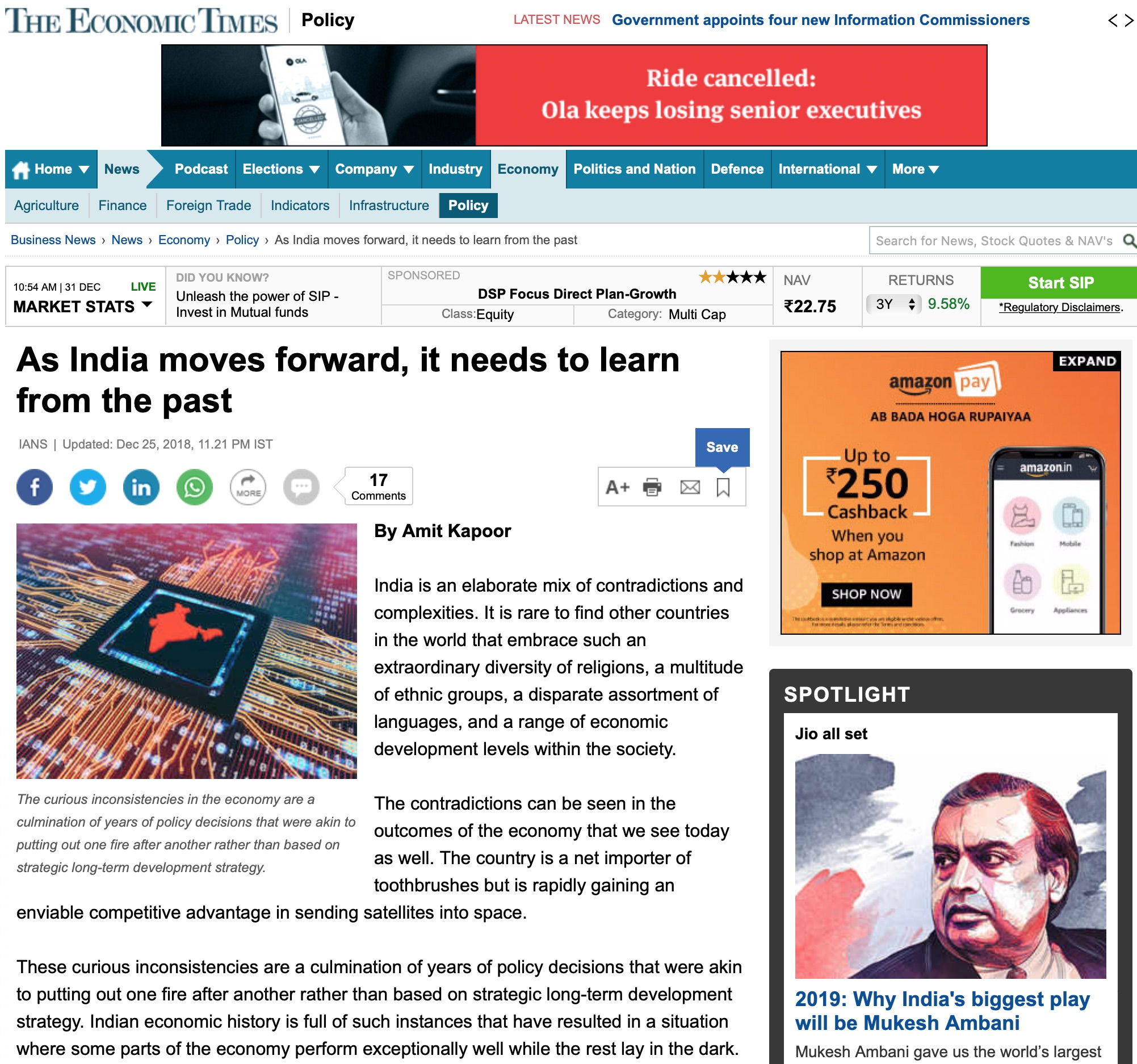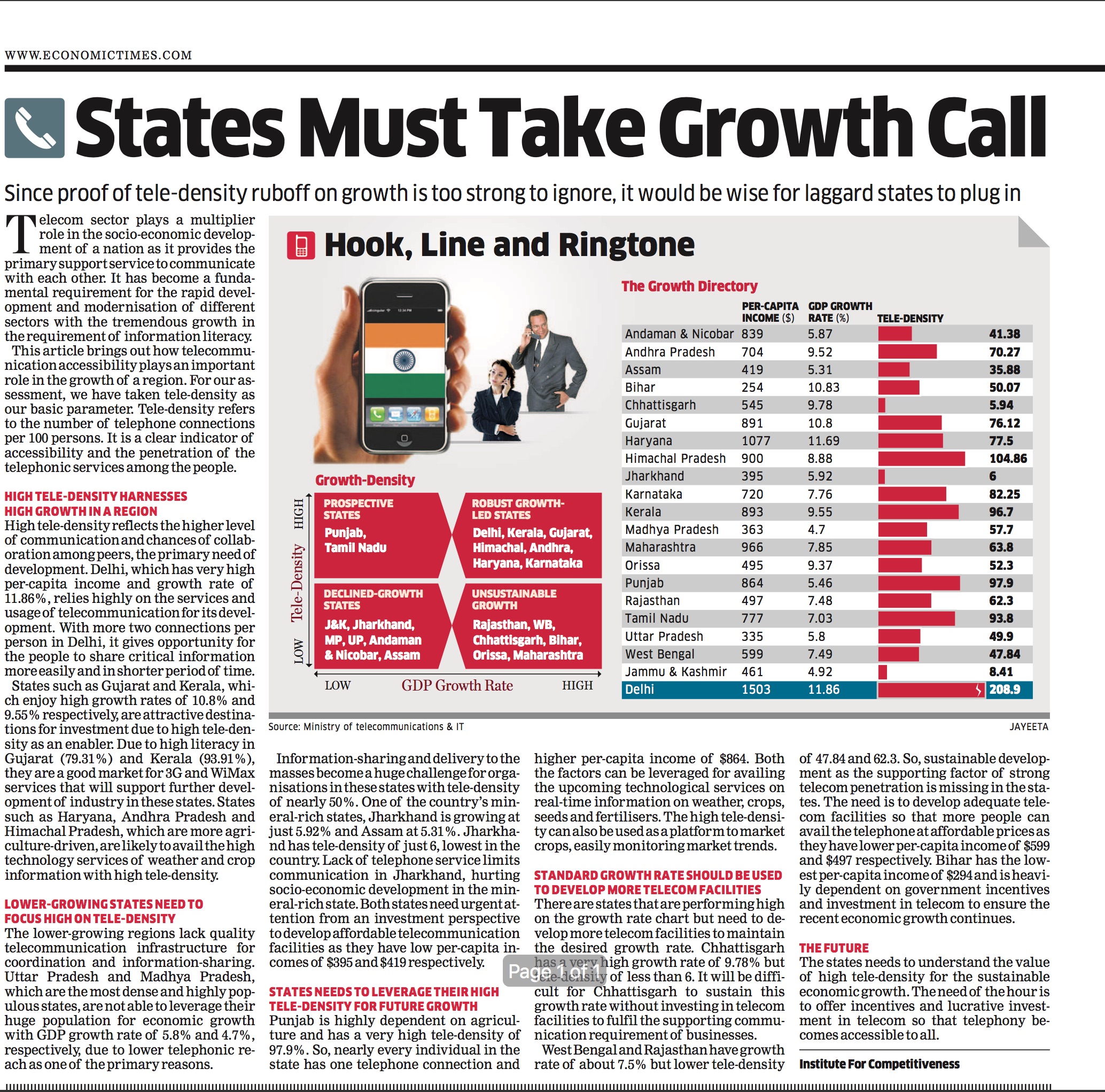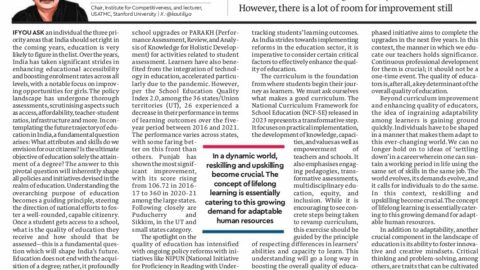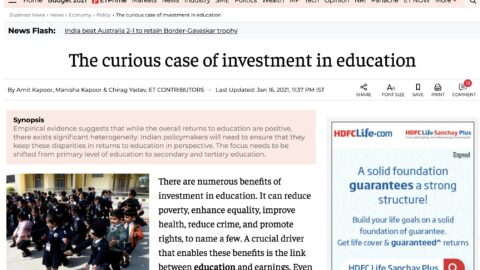By Amit Kapoor and Jessica Duggal
Against the backdrop of rising poverty and income inequality, a closer examination of India’s labour market is vital for developing effective policies that promote inclusive economic growth and social stability. India’s labour market is experiencing significant transformations driven by technological advancements, demographic shifts, and global economic changes. Analysing these trends and shifts is essential to understanding their impact on employment patterns, wage structures, and job security. By scrutinising key aspects such as workforce participation rates, sectoral employment changes, and the informal economy, policymakers can identify both challenges and opportunities within the labour market. For instance, gaining insights into gender disparities can help design targeted initiatives to enhance workforce inclusivity and equity. A thorough analysis of India’s labour market trends and shifts lays the groundwork for crafting strategic policies that address the primary causes of income inequality and poverty, fostering a more resilient and prosperous economy for all.
According to the Periodic Labour Force Survey (August 2022-July 2023), the unemployment rate was recorded at 3.2% for individuals aged 15 and above. Over the years, the country’s unemployment rate has steadily declined from 6% in 2017-18. However, this decrease has been accompanied by a rising share of self-employed individuals, including house help, own account workers, and employers. In 2022-23, approximately 48% of workers were engaged in the self-employed sector. The sector also generated nearly 44% of salaries. Similarly, about 32% of workers were employed in the regular salaried category, which generated around 44% of total incomes. A rising share of the self-employed sector should be closely monitored. While it could be mistaken for a surge in entrepreneurship, it often indicates increasing informalisation, which translates into lower wages, job insecurity, and poor working conditions. At the same time, while looking at the unemployment rate across different levels of education, the highest rate of unemployment has been found at the graduate level (13.4%), followed by the diploma/certificate level (12.2%) and the post-graduate and above (12.1%). Interestingly, the PLFS reveals negligible levels of unemployment among individuals who are either illiterate or have only primary-level education. Notably, as the level of education increases, so does the percentage of unemployed people. The low unemployment rate in the illiterate category may be because these individuals are either engaged in unskilled work or not seeking jobs at all. However, this explanation does not apply to the high unemployment rates among those with higher education levels, where the demand for skilled employment is greater.
The implications of these trends are multifaceted. High unemployment rates among the educated can lead to underemployment and a ‘jobless growth’ scenario, where economic growth does not translate into adequate job creation. This situation can increase feelings of disenfranchisement among the youth and educated classes, potentially leading to social unrest. Furthermore, the high level of self-employment, especially in informal sectors, indicates a lack of formal job opportunities and may suggest a fallback option for those who cannot find stable employment. While this can provide income to many, it does not offer the security, benefits, and income stability associated with formal employment, thereby perpetuating cycles of poverty. Those with higher education face more significant challenges in securing appropriate employment, suggesting that inequality could be exacerbated by the mismatch between educational outputs and market needs. This mismatch may result in the underutilisation of human capital, leading to inefficiencies in the economy and limited opportunities for upward mobility.
Addressing these issues requires a multi-pronged approach. There is a need for policies that promote job creation in the formal sector, especially for the educated workforce. This could involve enhancing vocational training and education programs that are aligned with market demands, providing incentives for businesses to formalise their operations, and improving the regulatory framework to protect workers in informal sectors. Additionally, efforts to improve the quality of education and ensure that it equips students with relevant skills can help bridge the gap between education and employment.
The Labour Force Participation Rate (LFPR) was recorded at 57.9% for individuals 15 years and above in usual status – a significant increase from 49.8%. Despite a consistent rise in female participation over the years, it remains markedly lower than the male participation rate. The Female LFPR has increased from 23.3% to 37%, but the Male LFPR still accounts for over 75% of the labour force. This persistently low female participation poses a significant challenge to achieving an equitable labour market, as it excludes nearly half of the working-age population, hindering the ability to fully reap and distribute the benefits of a high working-age population. The persistently low female participation in the workforce presents a substantial barrier to achieving an equitable labour market. It effectively excludes nearly half of the working-age population from contributing to and benefiting from economic activities. Such exclusion limits the overall economic productivity of the country, as it disregards the potential contributions of a significant portion of its population. Economically active women bring diverse perspectives and skills that can enhance innovation, productivity, and growth.
Poverty and inequality in our country transcend over the life course of a household or an individual, with experiences becoming more profound due to external shocks. In such circumstances, multiple interventions are required to reduce the adversities, necessitating a framework embedded in the public welfare and capability approaches. In other words, a two-pronged strategy with efficient social safety nets and enhanced capability through targeted education and skill development programs is essential. These measures act as a buffer against economic shocks and provide a foundation of stability. However, enhancing individual and community capabilities is equally important for sustainable poverty alleviation. This can be achieved through targeted education and skill development programs tailored to different demographic groups, including women, youth, and marginalised communities. By investing in the education sector, vocational training, and continuous learning opportunities, individuals can acquire the skills necessary to compete in a dynamic job market, adapt to technological changes, and pursue entrepreneurial ventures.
The article was published with Business world on July 12, 2024.
























